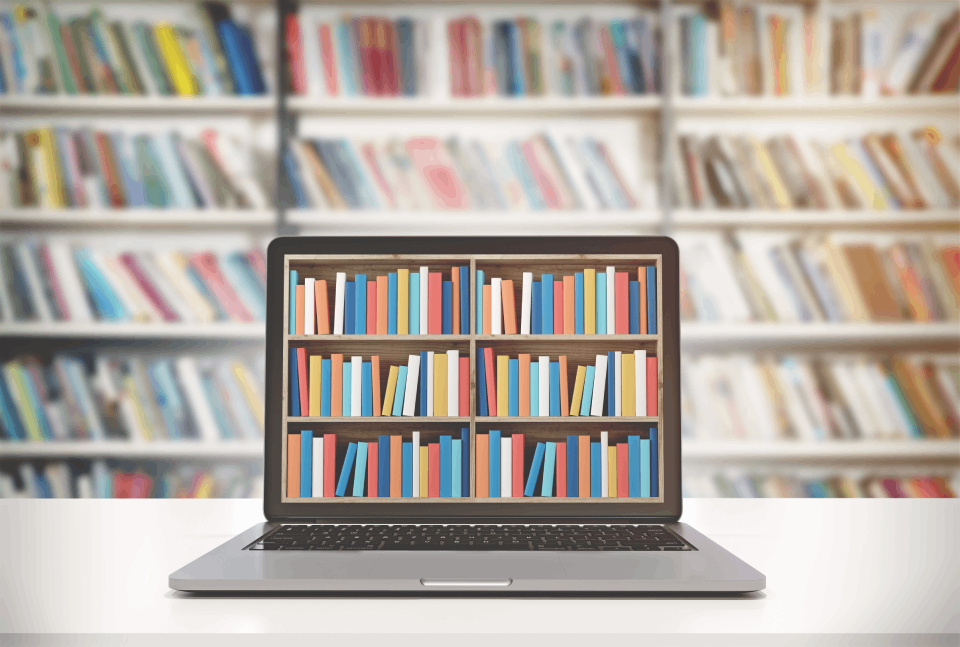
Digital libraries are now a norm at most universities and colleges. Not only do digital libraries combine information resources and technology, but they also allow remote access. That breaks down all physical barriers and makes the information available 24/7.
Now that remote online education is also gaining popularity, digital libraries help students gain a mammoth of knowledge without stepping out of their homes.
But that doesn’t mean we should restrict digital libraries to remote learning only.
Setting up digital libraries at schools empowers students and allows them to maximize their access to extensive study materials. That's why today's schools ensure that they have digital and traditional libraries.
This post will highlight the many benefits of introducing digital libraries to schools. We will also give you valuable tips for setting up a digital library.
Why Does your School Need a Digital Library?
If you want your students to become tech-savvy, you must give them access to digital resources. However, many students can already access the internet and social media content. However, their sources are not as credible as scientific research and high-quality materials.
Thanks to a digital library, a school can provide a rich source of information to help its students learn from the best and most credible sources.
Benefits of Digital Libraries at Schools
We can refer to a digital library as a portal that opens access to a storehouse of magazines, documents, books, e-publications, journals, books, etc.
So let’s delve deeper into these benefits.
Quick Access
A digital library is quick and easy to access. All students need is an electronic device and a stable internet connection. Many schools provide devices for their students to access these libraries easily. It could be any device, from a laptop to a tablet or a smartphone. Regardless of the location of these students, access to digital libraries is always quick and easy so that students can carry out their academic activities.
Round the Clock Availability
A conventional library has fixed opening and closing hours. However, a digital library is not time-bound. Students can access the digital library whenever they want, and that’s the best part about this online setup. Hence, students can learn from all materials at their place within the comfort of their homes.
Automated and Simplified Management
Unlike a conventional library, there is no need for a librarian who will be responsible for the upkeep of all books. Generally, cybrarians look after digital libraries and perform many functions. Some of these functions include indexing, organizing, tracking, or preserving the magazines and books present in the digital library.
However, numerous library management software is available to ensure cybrarians maintain the library correctly. Better maintenance of these libraries guarantees that teachers and students will have a smooth experience while using the digital library.
E-Resources, Books, and Unlimited Collection
A physical library needs an extensive infrastructure to store volumes of books, magazines, and journals. Thus, you need to spend a fortune setting up a school library. However, that’s not the case with digital libraries. While you can store a rich collection of resources and books in a digital library, you don’t have to invest in any infrastructure or building. Instead, collections of books and magazines remain on the internet, stored in cloud storage.
More Choices for the Readers
When students have access to digital libraries, they have access to more books and resources. eBooks, research papers, scientific journals, and books are just a few resources available in digital libraries.
Physical space is a critical factor for determining the storage limit of a traditional library. Books consume a lot of space, and students must search for their books after roaming around the library. But the internet and cloud storage make it easy for students to browse various resources without wasting much time. Consequently, that expands the students’ learning horizons, and they can access a wealth of information from all parts of the globe.
Easier Information Retrieval
Thanks to technology, digital libraries now offer incredible search features. For example, truncation, Boolean, and proximity operators. The Boolean operators OR, NOT, and AND are usually used for combining keywords when searching research databases. Using these operators makes the search more focused. Hence, students get precise and accurate results.
Digital libraries are developing more sophisticated features to make the students' search and reading experience more convenient. For example, intuitive search engine technologies, such as automatic term expansion or ranking, can help young students to conduct independent searches.
Students can read and access the library materials in different digital formats—for example, videos, audiobooks, eBooks, and white papers.
Creating a Heritage for Future Generations
Online libraries are a reservoir for storing information, data, and findings. We can’t say the same for conventional libraries because they keep this information as physical records. That means we can lose data stored in a traditional library. However, a digital library can collect and protect copies of research/studies by creating a virtual heritage of information.
Tips for Creating an Effective Digital Library at School
Digital libraries offer unique opportunities for students to find, evaluate, and use digital content. But that’s possible when students can easily navigate the library to find their desired information.
Teachers and students can’t achieve the maximum results of a digital library if it is not set up correctly. Schools must design a versatile digital library to improve student engagement. Students of different grades (and ages) will require other learning materials. Hence, schools can’t just rely on traditional texts such as magazines or books for facilitating learning. Make sure you add digital formats such as videos and audiobooks.
Bottom Line
Many institutions, such as schools, are already on the journey to convert their traditional collections of educational material and books into digital formats. While some files are in HTML format, others can be stored in PDF, audio, or visual forms. A Digital library can display important information through different types of materials. All this information is readily available to students 24/7, so they can speed up their learning process.
